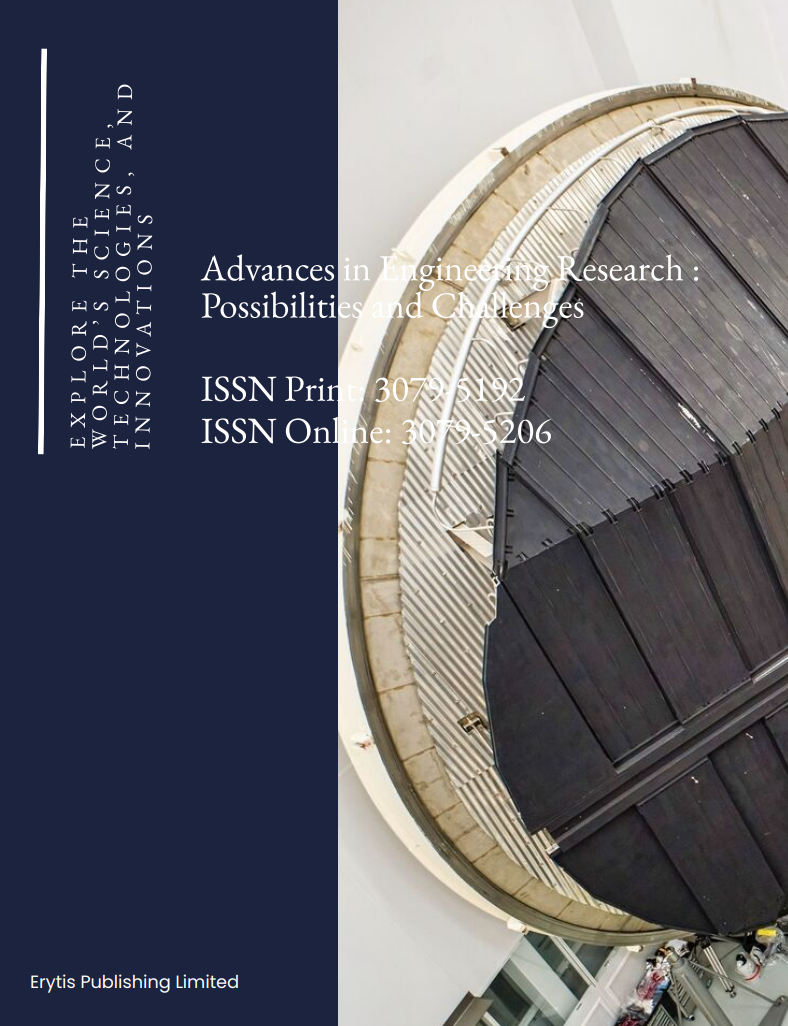Study on failure mode of oil interception fence in turbulent river
DOI:
https://doi.org/10.63313/AERpc.9014Keywords:
Turbulent river, Oil spill accident, Oil boomAbstract
To reduce environmental pollution caused by oil spills in turbulent river conditions, the key to researching oil spill recovery technology for turbulent rivers is to identify the critical factors leading to the failure of oil booms. This paper establishes a two-dimensional three-phase flow model based on FLUENT technology to simulate the transient changes and distribution patterns of oil and water under the influence of oil booms; it uses ANSYS to build a mechanical model of the oil boom, calculating the deformation degree and oil interception efficiency under turbulent conditions, and investigates areas with higher probabilities of structural failure. Additionally, based on similarity principles, a laboratory small-scale oil spill tank experiment is established to provide a basis for optimizing new oil boom structures and deployment methods.
References
[1] Le W. Structural analysis of booms[J]. Traffic Environmental Protection, 1995, (3): 41-49.
[2] Wei F, Xu Y. Numerical simulation of oil booms shape optimisation[J]. Hydrodynamics Research and Progress Series A, 2011, 26(06): 697-703.
[3] Kim M H, Muralidharan S, Kee S T. Seakeeping performance of a containment boom section in random waves and currents[J]. Oceanographic Literature Review, 1998, 45: 174.
[4] Hou T T, Hongyuan S, Bo J, et al. Numerical and experimental study of oil boom motion response and oil-stopping effect under wave-current action[J]. Ocean Engineering, 2024, 291: 116439.
[5] Jin Ruijia, Chen Songgui, Geng Baolei.Study on dynamic characteristics of physical model test of oil booms with large scale [C].China Society of Ocean Engineering.Proceedings of the 19th Chinese Ocean (Shore) Engineering Academic Conference (Part II).China Society of Ocean Engineering: China Society of Ocean Engineering, 2019:53-58.
[6] Xu Mei. Marine pollution prevention technology in Japan. Marine Environmental Science, 1986, November, Vol. 5, No.4: 69-75.
[7] Daniel P.Daniel P. Prendergast, Philip M. Gschwend. Assessing the performance and cost of oil spill remediation technologies[J]. Journal of Cleaner Production, 2014, 78.
[8] Wang Zuguang, Dong Hua. Emergency response, control measures and implications of the oil spill in the Gulf of Mexico, USA [J]. International Petroleum Economy, 2010,18(06):1-4+94.
Downloads
Published
Issue
Section
License
Copyright (c) 2025 by author(s) and Erytis Publishing Limited.

This work is licensed under a Creative Commons Attribution 4.0 International License.















